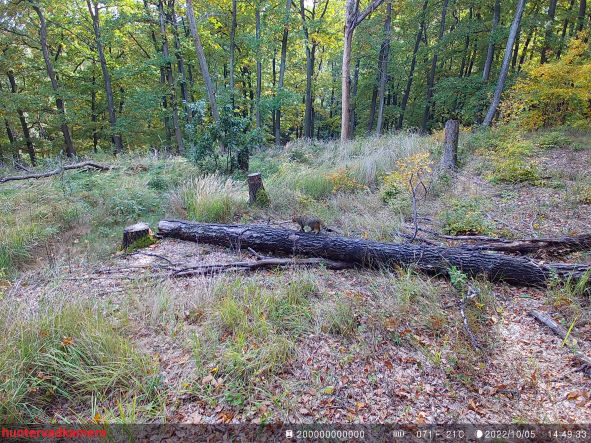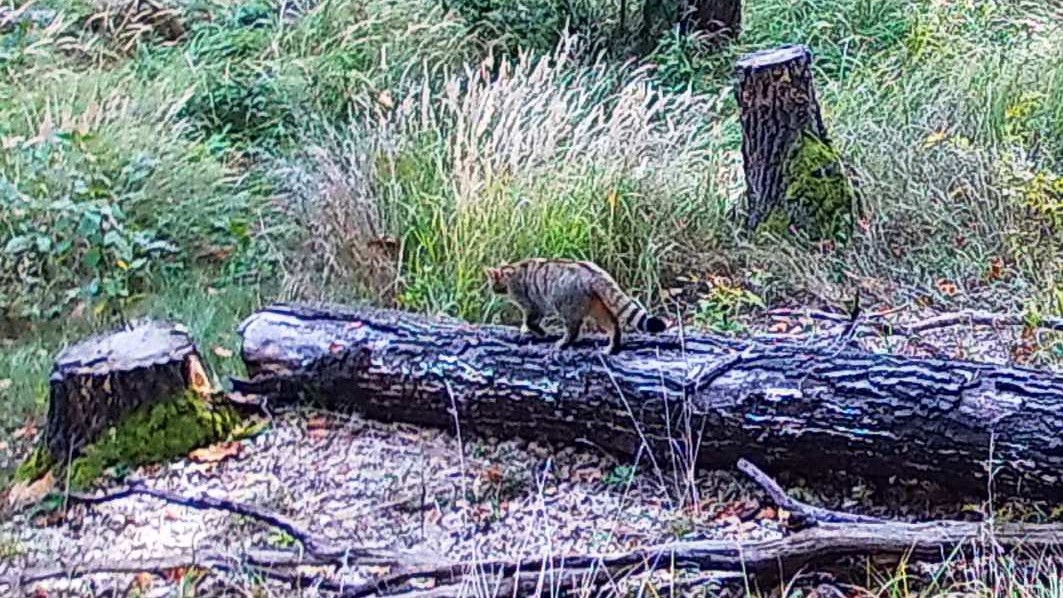Major Borbála, Koncz Péter (DINPD)
The structural characteristic of natural forests, such as the open clearings and different types of lying and standing dead wood (visible in the picture) were created in 2019 by the Duna-Ipoly National Park Directorate on the project site of the LIFE4OakForests in Börzsöny Mountains, Hungary. The natural habitat of the strictly protected wild cat is mainly natural, continuous, large forests. The natural forests not only serve hunting range for the wild cats but includes suitable hiding places in tree den. This is the reason why it is important to maintain these forests and enrich their structural diversity.
The wild cat is a shy, cautious animal, it avoids settlements and places with human disturbance. At first sight, wild cats might be easily mistaken for domestic cats, but the color of wild cats is always grey-brown, with ocher yellow markings on the lower part of the body and the inside of the legs. Their main distinguishing feature is the bluntly rounded, kinky, black-tipped tail, on which there are 5-7 unrelated black rings. The observation of the wild cat’s behavior and occurrence is essential for successful conservation.
The main threats for the wild cats are habitat degradation and deforestation, especially in the case of large, undisturbed forest patches. Furthermore, hybridization with domestic cats and feral domestic cats, competition for food and habitat, and catching diseases from feral cats are significant risk factors. With responsible cat keeping, we can do a lot to protect wild cats, it is important to never let your pet cat out into the forest! By maintaining the habitat of wild cats, we can also contribute to the protection of many other species, e.g. the strictly protected lynx.

